
The energy spectrum of the highest-energy particles in the Universe, ultra-high energy cosmic rays, has been measured with the Pierre Auger Observatory with an unprecedented precision. In addition to the well-known kink in the energy spectrum, typically referred to as the ankle, a new spectral break is found at somewhat higher energy. This new break in the energy spectrum can be explained by an energy-dependent mass composition of cosmic rays. The results are published in two related papers (Phys. Rev. Lett. 125, 121106, 2020 and Phys. Rev. D 102, 062005, 2020).
This determination of the energy spectrum is unique in having an unprecedented exposure of more than 60,000 km2 sr yr, in its method of determining the spectrum free of assumptions about the mass composition of the initial cosmic ray particle, and about details of the hadronic physics of air showers.
Ultra-high energy cosmic rays (UHECRs) are particles that reach energies of up to 1020 eV, the highest energies of individual particles known in the Universe. With our currently available technology, the LHC accelerator would have to be scaled to the size of the orbit of the planet Mercury to reach this energy. The flux of these particles is extremely small. Less than one particle per century arrives on an area of a square-kilometer. There is a long-standing quest to identify the sources of these particles and the processes that give them such exceptional energies.
The Pierre Auger Collaboration, a group of about 400 scientists from 17 countries from all over the world, is operating the world’s largest observatory for cosmic rays: a hybrid detector made of more than 1600 surface water-Cherenkov stations covering a 3,000 km2 area, which is overlooked by 27 fluorescence telescopes. Together, the different instruments provide calorimetric measurements of the energies of particle cascades produced by UHECRs in the atmosphere and an indirect evaluation of the mass of the primary particle. Combining the information on the energy spectrum, mass composition and the observed arrival direction distribution, important constraints on the sources of these extraordinary particles can be derived.
Analyzing the data collected by the Pierre Auger Observatory so far, the energy spectrum of UHECRs has been determined with very high statistics. Thanks to the unprecedented precision of the measurement, a new spectral feature, a break in the power law at about 1.3´1019 eV, has been identified. The results are reported in two recent publications (Phys. Rev. Lett. 125, 121106, 2020 and Phys. Rev. D 102, 062005, 2020) of the Pierre Auger Collaboration and are illustrated in Figure 1, which shows a possible interpretation of the observed flux and composition data of UHECRs in a scenario with sources that inject particles with a mass composition that changes with energy. The shown example represents a particular class of models, in which the acceleration of particles depends only on their rigidity (energy divided by charge). The abundance of nuclear elements appears to be dominated by intermediate-mass nuclei that are released from the sources with a very hard energy spectrum, which is modified by extragalactic propagation effects. In such a model scenario, the new feature in the spectrum would naturally occur due to the change of composition in the energy range of the new spectral break.
The observed energy spectrum also determines the energy density injected as UHECRs by continuously emitting sources into extragalactic space. Interestingly, some classes of Active Galactic Nuclei and Starburst Galaxies, for which indications of anisotropy have been obtained in different analyses of the Pierre Auger Collaboration, are expected to provide this energy production rate: an intriguing step forward in the quest for the UHECR sources.
The Pierre Auger Observatory is currently undergoing a large-scale upgrade by adding scintillation detectors and radio antennas on top of the existing water-Cherenkov detector stations. This will allow the scientists to obtain more information about the UHECR mass composition, extending it to the highest energies where a possible presence of light mass nuclei could open a new window to composition-sensitive searches for sources and studies of cosmic magnetic fields.
Romania has fully joined the Pierre Auger Collaboration in 2014, and its current contribution comes from the following three institutions: Institute of Physics and Nuclear Engineering Horia Hulubei (IFIN-HH), Institute of Space Science (ISS) and University Polytechnic Bucharest (UPB). Since 2019, fluorescence detectors of the Pierre Auger Observatory are fully monitored and operated, upon a common collaborative measurement calendar, also remotely from Romania, which is “from ISS-Măgurele a step forward to the experiment in the Argentinian pampas”. The Auger-group at ISS contributes also to the mass simulation production of Auger measured events using distributed computing in frame of Auger GRID VO (Virtual Organization), as well as to disseminating and awareness of physics studied at Auger, contributing thus to education through science.
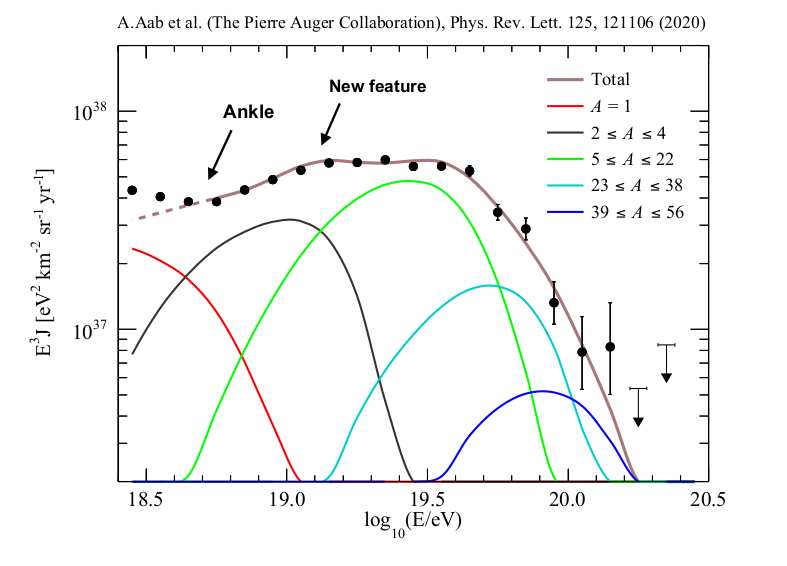 Figure 1: All-particle flux of the highest energy cosmic rays as measured with the Pierre Auger Observatory, scaled by E3. The data are compared with a representative model scenario for sources, illustrating the correlation between the energy of the new spectral feature and the energy-dependent mass composition of the particles.
Figure 1: All-particle flux of the highest energy cosmic rays as measured with the Pierre Auger Observatory, scaled by E3. The data are compared with a representative model scenario for sources, illustrating the correlation between the energy of the new spectral feature and the energy-dependent mass composition of the particles.
Contact person: Dr. Gina Isar <gina.isar[at]spacescience.ro>, (ISS) Institutional Responsible in Auger




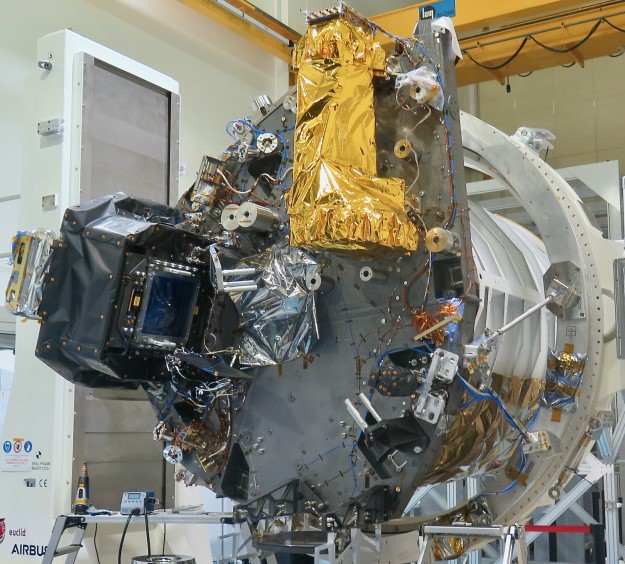
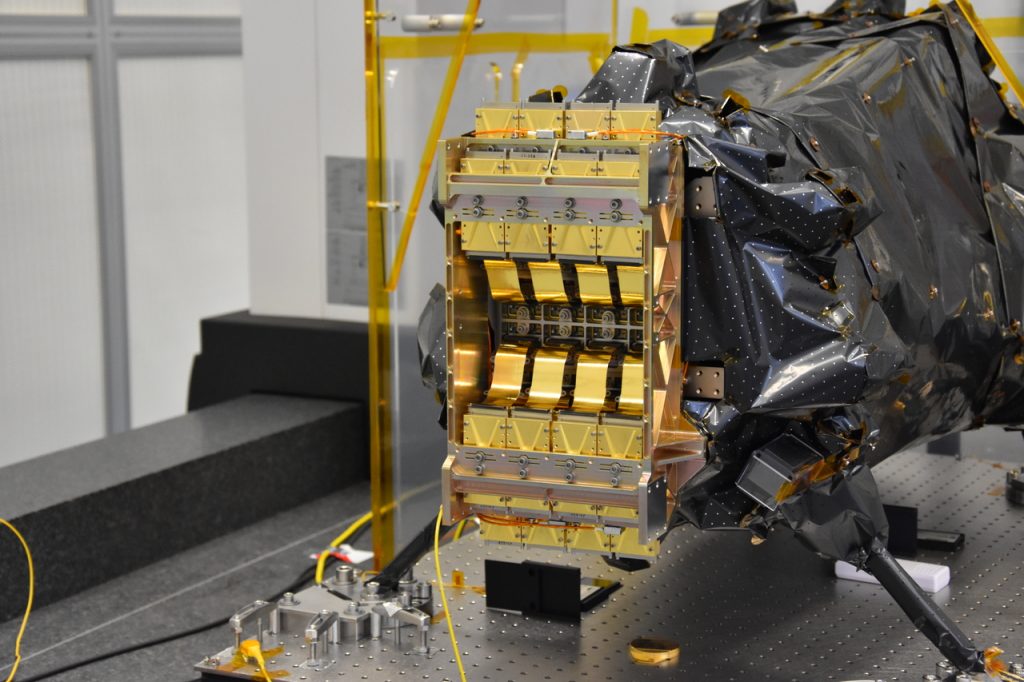
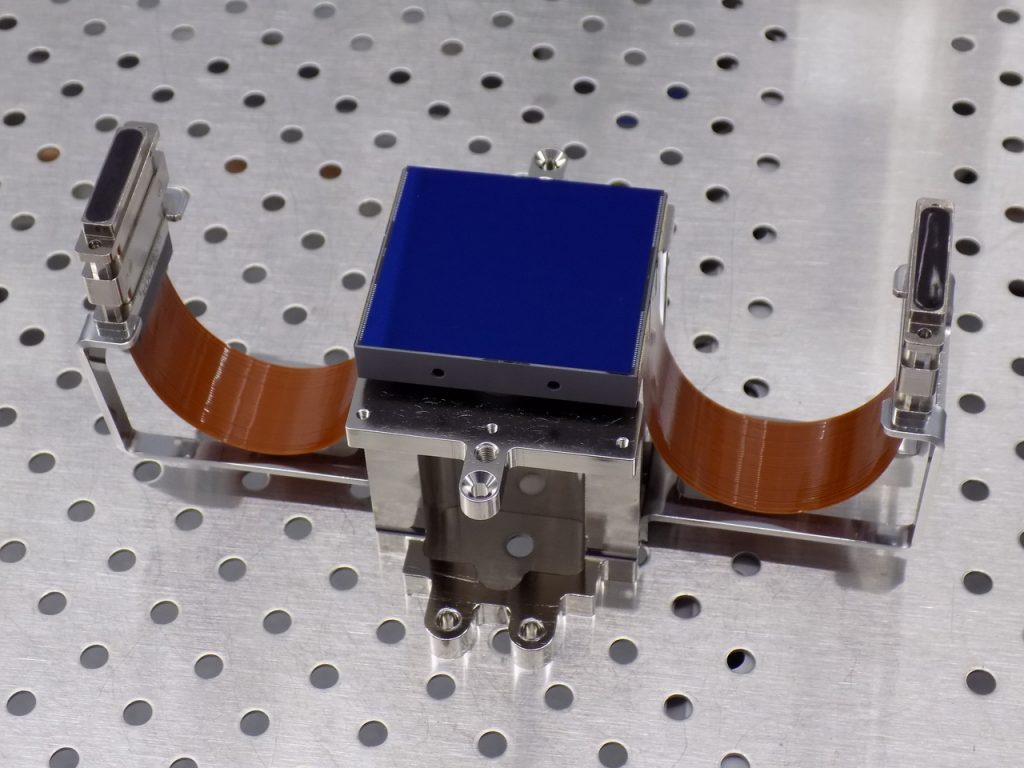
 În data de 27 noiembrie 2020 va avea loc evenimentul european „Noaptea Cercetătorilor”, sub deviza “Doing Research at Midnight in ROmania – DoReMi-RO”.
În data de 27 noiembrie 2020 va avea loc evenimentul european „Noaptea Cercetătorilor”, sub deviza “Doing Research at Midnight in ROmania – DoReMi-RO”.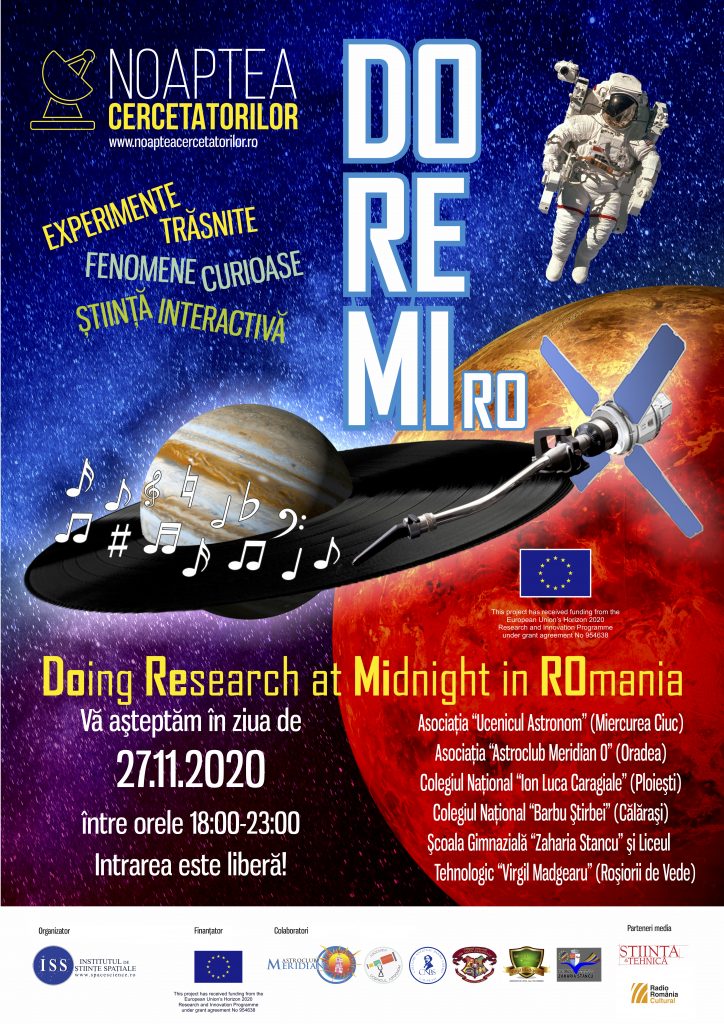


















 Cele mai strălucite idei ale cercetătorilor români vor fi aduse mai aproape de publicul de toate vârstele vineri, 27 septembrie 2019 (între orele 17:00 şi 22:00), și sâmbătă, 28 septembrie 2019 (între orele 12:00 şi 20:00) la Noaptea Cercetătorilor 2019, un eveniment care va avea loc în Parcul Lumea Copiilor (intrarea dinspre Palatul Copiilor) din București, dar și în alte 25 de orașe din România.
Cele mai strălucite idei ale cercetătorilor români vor fi aduse mai aproape de publicul de toate vârstele vineri, 27 septembrie 2019 (între orele 17:00 şi 22:00), și sâmbătă, 28 septembrie 2019 (între orele 12:00 şi 20:00) la Noaptea Cercetătorilor 2019, un eveniment care va avea loc în Parcul Lumea Copiilor (intrarea dinspre Palatul Copiilor) din București, dar și în alte 25 de orașe din România.